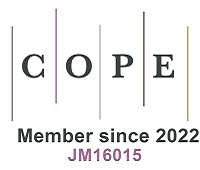REFERENCES
1. Sartbaeva, A.; Kuznetsov, V. L.; Wells, S. A.; Edwards, P. P. Hydrogen nexus in a sustainable energy future. Energy. Environ. Sci. 2008, 1, 79.
2. Banham, D.; Kishimoto, T.; Zhou, Y.; et al. Critical advancements in achieving high power and stable nonprecious metal catalyst-based MEAs for real-world proton exchange membrane fuel cell applications. Sci. Adv. 2018, 4, eaar7180.
3. Debe, M. K. Electrocatalyst approaches and challenges for automotive fuel cells. Nature 2012, 486, 43-51.
5. Eberle, U.; Müller, B.; von, H. R. Fuel cell electric vehicles and hydrogen infrastructure: status 2012. Energy. Environ. Sci. 2012, 5, 8780.
6. Katsounaros, I.; Schneider, W. B.; Meier, J. C.; et al. Hydrogen peroxide electrochemistry on platinum: towards understanding the oxygen reduction reaction mechanism. Phys. Chem. Chem. Phys. 2012, 14, 7384-91.
7. Gasteiger, H. A.; Kocha, S. S.; Sompalli, B.; Wagner, F. T. Activity benchmarks and requirements for Pt, Pt-alloy, and non-Pt oxygen reduction catalysts for PEMFCs. Appl. Catal. B. Environ. 2005, 56, 9-35.
8. Gasteiger, H.; Panels, J.; Yan, S. Dependence of PEM fuel cell performance on catalyst loading. J. Power. Sources. 2004, 127, 162-71.
9. Brouzgou, A.; Song, S.; Tsiakaras, P. Low and non-platinum electrocatalysts for PEMFCs: current status, challenges and prospects. Appl. Catal. B. Environ. 2012, 127, 371-88.
10. Liu, M.; Zhao, Z.; Duan, X.; Huang, Y. Nanoscale structure design for high-performance Pt-based ORR catalysts. Adv. Mater. 2019, 31, e1802234.
11. Yang, X. F.; Wang, A.; Qiao, B.; Li, J.; Liu, J.; Zhang, T. Single-atom catalysts: a new frontier in heterogeneous catalysis. Acc. Chem. Res. 2013, 46, 1740-8.
12. Qiao, B.; Wang, A.; Yang, X.; et al. Single-atom catalysis of CO oxidation using Pt1/FeOx. Nat. Chem. 2011, 3, 634-41.
13. He, Y.; Liu, S.; Priest, C.; Shi, Q.; Wu, G. Atomically dispersed metal-nitrogen-carbon catalysts for fuel cells: advances in catalyst design, electrode performance, and durability improvement. Chem. Soc. Rev. 2020, 49, 3484-524.
14. Lefèvre, M.; Proietti, E.; Jaouen, F.; Dodelet, J. P. Iron-based catalysts with improved oxygen reduction activity in polymer electrolyte fuel cells. Science 2009, 324, 71-4.
15. Xie, X.; He, C.; Li, B.; et al. Performance enhancement and degradation mechanism identification of a single-atom Co-N-C catalyst for proton exchange membrane fuel cells. Nat. Catal. 2020, 3, 1044-54.
16. Wan, X.; Liu, X.; Li, Y.; et al. Fe-N-C electrocatalyst with dense active sites and efficient mass transport for high-performance proton exchange membrane fuel cells. Nat. Catal. 2019, 2, 259-68.
17. Li, J.; Chen, M.; Cullen, D. A.; et al. Atomically dispersed manganese catalysts for oxygen reduction in proton-exchange membrane fuel cells. Nat. Catal. 2018, 1, 935-45.
18. The United States Department of Energy. Hydrogen and fuel cell technologies office multi-year research, development, and demonstration plan. Available from: https://www.energy.gov/sites/default/files/2024-05/hfto-mypp-2024.pdf. [Last accessed on 11 Mar 2025].
19. Liu, S.; Li, C.; Zachman, M. J.; et al. Atomically dispersed iron sites with a nitrogen-carbon coating as highly active and durable oxygen reduction catalysts for fuel cells. Nat. Energy. 2022, 7, 652-63.
20. Miao, Z.; Wang, X.; Zhao, Z.; et al. Improving the stability of non-noble-metal M-N-C catalysts for proton-exchange-membrane fuel cells through M-N bond length and coordination regulation. Adv. Mater. 2021, 33, e2006613.
21. Wu, Y.; Ding, Y.; Han, X.; et al. Modulating coordination environment of Fe single atoms for high-efficiency all-pH-tolerated H2O2 electrochemical production. Appl. Catal. B. Environ. 2022, 315, 121578.
22. Deng, M.; Wang, D.; Li, Y. General design concept of high-performance single-atom-site catalysts for H2O2 electrosynthesis. Adv. Mater. 2024, 36, e2314340.
23. Nørskov, J. K.; Rossmeisl, J.; Logadottir, A.; et al. Origin of the overpotential for oxygen reduction at a fuel-cell cathode. J. Phys. Chem. B. 2004, 108, 17886-92.
24. Seh, Z. W.; Kibsgaard, J.; Dickens, C. F.; Chorkendorff, I.; Nørskov, J. K.; Jaramillo, T. F. Combining theory and experiment in electrocatalysis: insights into materials design. Science 2017, 355, eaad4998.
25. Chen, Y.; Ji, S.; Wang, Y.; et al. Isolated single iron atoms anchored on N-Doped porous carbon as an efficient electrocatalyst for the oxygen reduction reaction. Angew. Chem. Int. Ed. 2017, 56, 6937-41.
26. Sun, T.; Tian, B.; Lu, J.; Su, C. Recent advances in Fe (or Co)/N/C electrocatalysts for the oxygen reduction reaction in polymer electrolyte membrane fuel cells. J. Mater. Chem. A. 2017, 5, 18933-50.
27. Sun, P.; Qiao, K.; Li, D.; et al. Designing oxygen-doped Fe-N-C oxygen reduction catalysts for proton- and anion-exchange-membrane fuel cells. Chem. Catal. 2022, 2, 2750-63.
28. Gao, J.; Yang, H. B.; Huang, X.; et al. Enabling direct H2O2 production in acidic media through rational design of transition metal single atom catalyst. Chem 2020, 6, 658-74.
29. Yin, P.; Yao, T.; Wu, Y.; et al. Single cobalt atoms with precise N-coordination as superior oxygen reduction reaction catalysts. Angew. Chem. Int. Ed. Engl. 2016, 55, 10800-5.
30. Sun, Y.; Silvioli, L.; Sahraie, N. R.; et al. Activity-selectivity trends in the electrochemical production of hydrogen peroxide over single-site metal-nitrogen-carbon catalysts. J. Am. Chem. Soc. 2019, 141, 12372-81.
31. Jung, E.; Shin, H.; Lee, B. H.; et al. Atomic-level tuning of Co-N-C catalyst for high-performance electrochemical H2O2 production. Nat. Mater. 2020, 19, 436-42.
32. Tian, L.; Gao, X.; Wang, S.; et al. Precise arrangement of metal atoms at the interface by a thermal printing strategy. Proc. Natl. Acad. Sci. U. S. A. 2023, 120, e2310916120.
33. Bai, X.; Wang, Y.; Han, J.; Niu, X.; Guan, J. Engineering the electronic structure of isolated manganese sites to improve the oxygen reduction, Zn-air battery and fuel cell performances. Appl. Catal. B. Environ. 2023, 337, 122966.
34. Hu, X.; Chen, S.; Chen, L.; et al. What is the Real origin of the activity of Fe-N-C electrocatalysts in the O2 reduction reaction? J. Am. Chem. Soc. 2022, 144, 18144-52.
35. Chen, S.; Luo, T.; Li, X.; et al. Identification of the highly active Co-N4 coordination motif for selective oxygen reduction to hydrogen peroxide. J. Am. Chem. Soc. 2022, 144, 14505-16.
36. Zhou, W.; Su, H.; Cheng, W.; et al. Regulating the scaling relationship for high catalytic kinetics and selectivity of the oxygen reduction reaction. Nat. Commun. 2022, 13, 6414.
37. Gao, R.; Wang, J.; Huang, Z.; et al. Pt/Fe2O3 with Pt-Fe pair sites as a catalyst for oxygen reduction with ultralow Pt loading. Nat. Energy. 2021, 6, 614-23.
38. Nishiori, D.; Menzel, J. P.; Armada, N.; et al. Breaking a molecular scaling relationship using an iron-iron fused porphyrin electrocatalyst for oxygen reduction. J. Am. Chem. Soc. 2024, 146, 11622-33.
39. Chong, L.; Wen, J.; Kubal, J.; et al. Ultralow-loading platinum-cobalt fuel cell catalysts derived from imidazolate frameworks. Science 2018, 362, 1276-81.
40. Guo, W.; Gao, X.; Zhu, M.; et al. A closely packed Pt1.5Ni1-x/Ni-N-C hybrid for relay catalysis towards oxygen reduction. Energy. Environ. Sci. 2023, 16, 148-56.
41. Wan, X.; Liu, Q.; Liu, J.; et al. Iron atom-cluster interactions increase activity and improve durability in Fe-N-C fuel cells. Nat. Commun. 2022, 13, 2963.
42. Li, L.; Yuan, K.; Chen, Y. Breaking the scaling relationship limit: from single-atom to dual-atom catalysts. Acc. Mater. Res. 2022, 3, 584-96.
43. Ying, Y.; Luo, X.; Qiao, J.; Huang, H. “More is different:” synergistic effect and structural engineering in double‐atom catalysts. Adv. Funct. Mater. 2021, 31, 2007423.
44. Yu, Z.; Xia, G.; Diaconescu, V. M.; et al. Atomically dispersed dinuclear iridium active sites for efficient and stable electrocatalytic chlorine evolution reaction. Chem. Sci. 2024, 15, 9216-23.
45. Wang, J.; Huang, Z.; Liu, W.; et al. Design of N-coordinated dual-metal sites: a stable and active Pt-free catalyst for acidic oxygen reduction reaction. J. Am. Chem. Soc. 2017, 139, 17281-4.
46. Yu, Z.; Si, C.; Lagrow, A. P.; et al. Iridium-iron diatomic active sites for efficient bifunctional oxygen electrocatalysis. ACS. Catal. 2022, 12, 9397-409.
47. Wang, X. X.; Prabhakaran, V.; He, Y.; Shao, Y.; Wu, G. Iron-free cathode catalysts for proton-exchange-membrane fuel cells: cobalt catalysts and the peroxide mitigation approach. Adv. Mater. 2019, 31, e1805126.
48. Cheng, X.; Jiang, X.; Yin, S.; et al. Instantaneous free radical scavenging by CeO2 nanoparticles adjacent to the Fe-N4 active sites for durable fuel cells. Angew. Chem. Int. Ed. Engl. 2023, 62, e202306166.
49. Xie, H.; Xie, X.; Hu, G.; et al. Ta-TiOx nanoparticles as radical scavengers to improve the durability of Fe-N-C oxygen reduction catalysts. Nat. Energy. 2022, 7, 281-9.
50. Jiang, W. J.; Gu, L.; Li, L.; et al. Understanding the high activity of Fe-N-C electrocatalysts in oxygen reduction: Fe/Fe3C nanoparticles boost the activity of Fe-Nx. J. Am. Chem. Soc. 2016, 138, 3570-8.
51. Jin, Z.; Li, P.; Meng, Y.; Fang, Z.; Xiao, D.; Yu, G. Understanding the inter-site distance effect in single-atom catalysts for oxygen electroreduction. Nat. Catal. 2021, 4, 615-22.
52. Liu, J.; Cao, C.; Liu, X.; et al. Direct observation of metal oxide nanoparticles being transformed into metal single atoms with oxygen-coordinated structure and high-loadings. Angew. Chem. Int. Ed. 2021, 60, 15248-53.
53. Hai, X.; Xi, S.; Mitchell, S.; et al. Scalable two-step annealing method for preparing ultra-high-density single-atom catalyst libraries. Nat. Nanotechnol. 2022, 17, 174-81.
54. Mehmood, A.; Gong, M.; Jaouen, F.; et al. High loading of single atomic iron sites in Fe-NC oxygen reduction catalysts for proton exchange membrane fuel cells. Nat. Catal. 2022, 5, 311-23.
55. Bates, J. S.; Khamespanah, F.; Cullen, D. A.; et al. Molecular catalyst synthesis strategies to prepare atomically dispersed Fe-N-C heterogeneous catalysts. J. Am. Chem. Soc. 2022, 144, 18797-802.
56. Zhang, M.; Li, H.; Chen, J.; et al. High-loading Co single atoms and clusters active sites toward enhanced electrocatalysis of oxygen reduction reaction for high-performance Zn-air battery. Adv. Funct. Mater. 2023, 33, 2209726.
57. Yin, S.; Li, Y.; Yang, J.; et al. Unveiling low temperature assembly of dense Fe-N4 active sites via hydrogenation in advanced oxygen reduction catalysts. Angew. Chem. Int. Ed. 2024, 63, e202404766.
58. Wang, Y.; Li, C.; Han, X.; et al. General negative pressure annealing approach for creating ultra-high-loading single atom catalyst libraries. Nat. Commun. 2024, 15, 5675.
59. Guo, D.; Shibuya, R.; Akiba, C.; Saji, S.; Kondo, T.; Nakamura, J. Active sites of nitrogen-doped carbon materials for oxygen reduction reaction clarified using model catalysts. Science 2016, 351, 361-5.
60. Choi, C. H.; Lim, H.; Chung, M. W.; et al. The Achilles’ heel of iron-based catalysts during oxygen reduction in an acidic medium. Energy. Environ. Sci. 2018, 11, 3176-82.
61. Liu, S.; Meyer, Q.; Jia, C.; et al. Operando deconvolution of the degradation mechanisms of iron-nitrogen-carbon catalysts in proton exchange membrane fuel cells. Energy. Environ. Sci. 2023, 16, 3792-802.
62. Osmieri, L.; Wang, G.; Cetinbas, F. C.; et al. Utilizing ink composition to tune bulk-electrode gas transport, performance, and operational robustness for a Fe-N-C catalyst in polymer electrolyte fuel cell. Nano. Energy. 2020, 75, 104943.
63. Sun, R.; Xia, Z.; Xu, X.; Deng, R.; Wang, S.; Sun, G. Periodic evolution of the ionomer/catalyst interfacial structures towards proton conductance and oxygen transport in polymer electrolyte membrane fuel cells. Nano. Energy. 2020, 75, 104919.
64. Malko, D.; Kucernak, A.; Lopes, T. In situ electrochemical quantification of active sites in Fe-N/C non-precious metal catalysts. Nat. Commun. 2016, 7, 13285.
65. Fu, X.; Zamani, P.; Choi, J. Y.; et al. In situ polymer graphenization ingrained with nanoporosity in a nitrogenous electrocatalyst boosting the performance of polymer-electrolyte-membrane fuel cells. Adv. Mater. 2017, 29.
66. Tabe, Y.; Aoyama, Y.; Kadowaki, K.; Suzuki, K.; Chikahisa, T. Impact of micro-porous layer on liquid water distribution at the catalyst layer interface and cell performance in a polymer electrolyte membrane fuel cell. J. Power. Sources. 2015, 287, 422-30.
67. Wang, S.; Chu, Y.; Lan, C.; et al. Metal-nitrogen-carbon catalysts towards acidic orr in pemfc: fundamentals, durability challenges, and improvement strategies. Chem. Synth. 2023, 3, 15.
68. Zhou, H.; Yang, T.; Kou, Z.; et al. Negative pressure pyrolysis induced highly accessible single sites dispersed on 3d graphene frameworks for enhanced oxygen reduction. Angew. Chem. Int. Ed. 2020, 59, 20465-9.
69. Liu, J.; Gong, Z.; Allen, C.; et al. Edge-hosted Fe-N3 sites on a multiscale porous carbon framework combining high intrinsic activity with efficient mass transport for oxygen reduction. Chem. Catal. 2021, 1, 1291-307.









